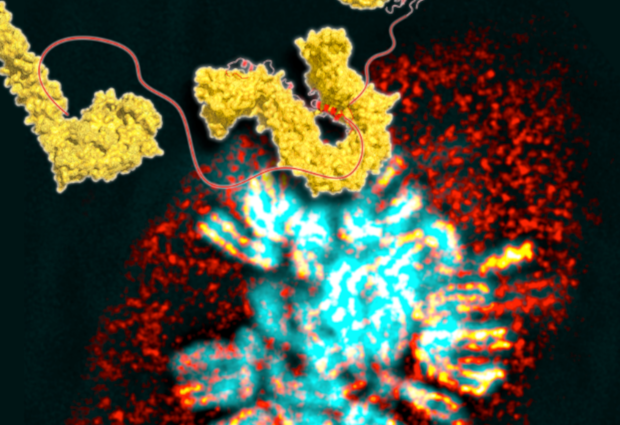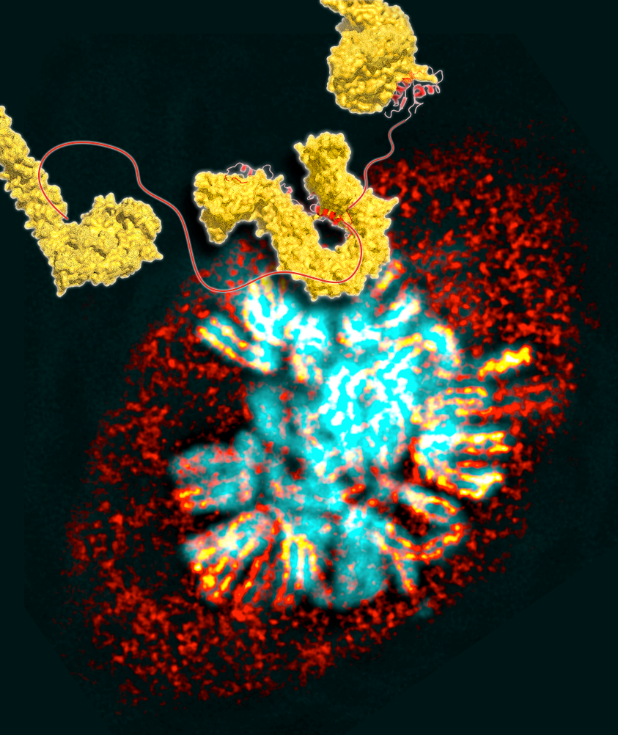
Read the latest Issue

DNA is present in each cell of our body. If all the DNA from one human cell was removed and aligned in a single strand, it would in theory add up to a total length of about two metres. In order to fit into the nucleus of a cell, DNA has to be compressed by a factor of about 300 000.
Just before cells divide, DNA has to be further packed into three-dimensional structures – that is how distinct chromosomes become visible. Crucial in the formation of chromosomes are proteins called condensins, which reshape the DNA. This Picture of the Week is a collage showing a three-dimensional model of a part of condensin in the foreground, and in the background the microscopy image of a human cell (red) containing chromosomes (cyan), with the condensins responsible for their shape at the centre of each chromosome (yellow).
Researchers in the Häring group at EMBL Heidelberg are interested in the mechanisms behind DNA condensation, because it is not known how condensins are able to reshape the DNA. The currently emerging concept is that condensins have the ability to expand DNA into large loops. Knowing more about the activity of condensins could help to understand how cells inherit a complete set of chromosomes every time they divide.

If you have a stunning picture of your science, your lab or your site, you can submit it to mathias.jaeger@embl.de.
Looking for past print editions of EMBLetc.? Browse our archive, going back 20 years.
EMBLetc. archive